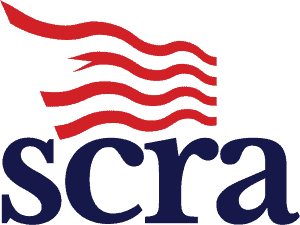Lenders Must Comply With SCRA Protections

SCRA protections are not to be taken lightly. Violating the Servicemembers Civil Relief Act carries serious penalties. But so few of lenders’ clients are servicemembers — is the risk really that high?
Think of the attention lenders must pay to these laws like insurance. Policyholders’ homes rarely burn down. Car accidents are infrequent. Is going without insurance worth the risk?
Hardly.
And it’s the same with SCRA protections. If only a single borrower doesn’t receive the SCRA protections to which they are entitled, the lending institution could face thousands or even millions in restitution, fines and penalties.
Contents
Painstaking Manual Monitoring Necessary

Lenders set up policies and procedures so that if borrowers fall behind in payments, the next step may follow automatically — to seek possession of collateral. But this is illegal under the SCRA. In those cases, the lending institution must halt the process, verify active duty status, or pay the price.
It’s similar with interest rates. If a servicemember enters active duty, lenders must lower the interest rate in contracts and loans that pre-date active duty. Therefore, lenders must check each loan to ensure the calculations are correct and in effect for the required time period.
This period of time is, in itself, another gray area for lenders.
When Do SCRA Protections Apply?
SCRA protections kick in for reservists on the day they receive notice of their call-up orders. But it is silent on the time frame for nonreservists. Should lenders apply the interest rate credit retroactive to the day of the active date, or the notice date?
The legal answer is the date of entry into active duty. But it’s better if lenders notify borrowers of their rights and allow them to choose the effective SCRA protection date. This may seem like turning over a lot of power to the customer. But the little bit lenders may lose in interest doesn’t compare to the possible penalties the government may impose or the public relations nightmare that can result from a denial to extend benefits.
Exercise Caution When Taking Action
If lenders think it is best to err on the side of caution and give retroactive SCRA protections of say, 30 days prior to notice just to be on the safe side, this action could also get them into trouble. Why? Because if lenders set a precedent and extend this extra time to some servicemembers, the expectation may be that they should extend the same to all to avoid an accusation of unfair and/or unequal treatment.
Furthermore, lenders could find themselves facing similar situations if they do not automatically apply SCRA protections across the board to customers who are servicemembers. That is, if a servicemember requests a lower interest rate due to their active-duty status, the institution should check to see if they have a separate car loan, mortgage, lease or any other type of contract with them and assume responsibility for applying the protections for these as well.
Who’s Responsible for Notification?
Most often, the law requires servicemembers to notify a lending institution of their change in duty status. But this is not always the case. Moreover, the requirements for notification have relaxed significantly in the last few years. For instance, courts no longer require servicemembers to provide a copy of their orders. Instead, they may provide letters from commanding officers, induction agreements, change of station documents and possibly other proof of service. Many settlements between lenders and government entities or courts have required that the lenders assume responsibility for researching their own records (often called “scrubbing” the database) and then reaching out to explain that SCRA protections are available.
The waters get further muddied due to the servicemembers’ demographic. Many servicemembers are young and misinformation is prevalent, so they do not always understand what the law entitles them to. Additionally, military pay is notoriously low, meaning every dollar counts to servicemembers. Thus, they can find themselves in a bad situation if they are unclear on when SCRA protections begin and end.
Further complications arise when considering how to retroactively calculate and properly refund changes to compound interest rates, escrow and amortization. The math must be correct or the courts may hold the lending institution liable. This applies to payoff statements and quotes as well — the protected rate will be different from the contract rate.
What Actions Do Courts Allow?
Improper attempts to foreclose on or repossess property from a servicemember on active duty can be classified as criminal activity. But if the lender obtains a court order first, most often it can be accomplished.
The steps involved can mean the difference between merely doing business and being prosecuted for a crime. Therefore, the best way to protect your institution is to establish a simple, routine protocol for verifying military status through the Servicemembers Civil Relief Act Centralized Verification Service. Stay vigilant during all stages of the collection process.
Some courts will even penalize lending institutions for making collection calls to servicemembers’ families.
Acknowledge SCRA Protections
The best way to avoid trouble is to acknowledge at the outset of every interaction with a servicemember and/or their family that your institution is aware of SCRA protections and intends to follow them to the letter of the law. Lenders’ staff should receive training in what they can and cannot say and do. Thus, they will be less likely to violate any laws and expose the lender.
Setting up and documenting a system with protocols for monitoring, testing, training and complying with the SCRA can help prove to the government that an institution is taking the law seriously and doing everything in its power to adhere to it.
Above all, remember courts favor servicemembers every time. The only way comply with the SCRA is to know which clients are/were on active military duty and when. The fastest, easiest way to obtain this information is through the Servicemembers Civil Relief Act Centralized Verification Service.
We provide documentation of servicemembers’ duty status, and we even provide military affidavits to present in court upon request.
Rely on SCRACVS for help staying in compliance with the SCRA.

